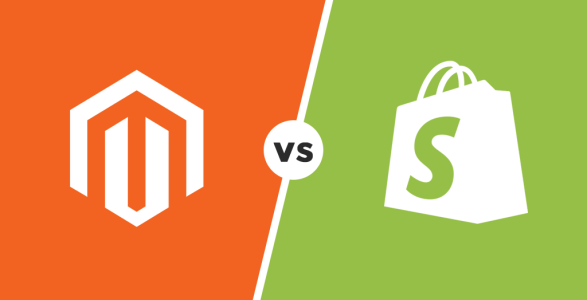In the world of e-commerce, choosing the right platform is crucial for success. Two popular options that often come up in discussions are Magento and Shopify. Both platforms offer robust features and extensive customisation capabilities. However, when it comes to integrating third-party APIs, there are notable differences between the two. In this blog post, we will explore the pros and cons of Magento and Shopify for 3rd party API integration and provide an example to illustrate these differences.
Magento and 3rd Party API Integration:
Magento, an open-source e-commerce platform, is renowned for its flexibility and scalability. It provides developers with extensive control over the software, making it highly customisable. When it comes to integrating third-party APIs, Magento's architecture allows for seamless integration with various systems and services. Its API framework is comprehensive, offering both SOAP and REST APIs, making it suitable for complex integrations. This flexibility makes Magento an excellent choice for businesses requiring extensive integration with external systems.
On the other hand, Shopify, a hosted e-commerce solution, offers a simplified approach to building an online store. While Shopify's built-in features cater to the needs of most businesses, its integration capabilities are more streamlined compared to Magento. Shopify primarily relies on its REST API, which is less flexible compared to Magento's API options. While it supports essential integrations with popular services, it may not be the best fit for businesses that require extensive customization or integration with niche services.
Example: Integrating a Payment Gateway
Let's consider an example of integrating a payment gateway into an e-commerce store. This is a critical aspect of any online business, and choosing the right platform for seamless payment integration is crucial.
With Magento, the open-source nature of the platform allows developers to work closely with payment gateway providers. Magento provides comprehensive documentation and developer resources to facilitate the integration process. Developers can utilize Magento's extensive API framework to connect with the payment gateway's APIs, enabling a highly customized and secure payment solution. Additionally, Magento's flexible architecture allows for the implementation of advanced features such as recurring payments or custom payment workflows, catering to specific business requirements.
In contrast, Shopify simplifies the payment integration process by offering a range of built-in payment gateways. This approach is ideal for businesses that prefer a hassle-free setup without extensive customization needs. Shopify's REST API enables basic integration with popular payment gateways, but it may lack the flexibility required for advanced customization. While Shopify does support additional payment gateways through third-party apps, the available options might be more limited compared to Magento's extensive library.
Conclusion:
When it comes to integrating third-party APIs into your e-commerce store, both Magento and Shopify offer distinct advantages. Magento's open-source nature and extensive API framework make it the go-to choice for businesses with complex integration needs and specific customisation requirements. On the other hand, Shopify's hosted solution provides simplicity and ease of use, making it a suitable option for businesses looking for a streamlined approach.
Ultimately, the choice between Magento and Shopify depends on your business requirements, the level of customization needed, and the complexity of the integration with third-party APIs. Analysing your specific needs and considering the strengths and limitations of each platform will help you make an informed decision that aligns with your long-term goals.
